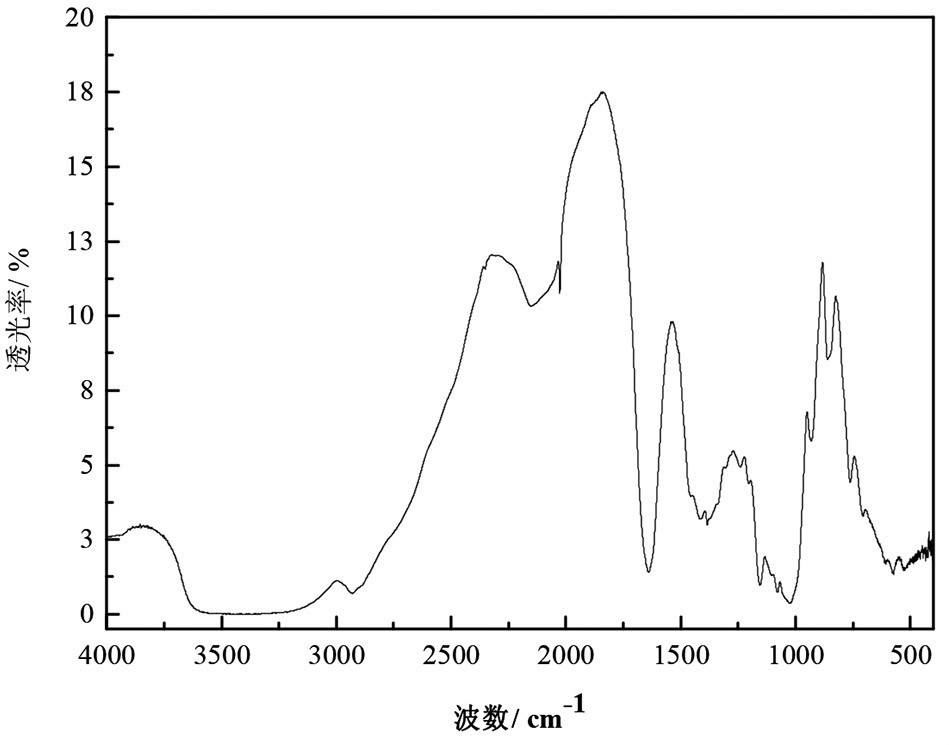Study on Synthesis of GT MAC Modified Starch

Starch ( C 6H 10 O 5 ) N is a natural polymer polymerized by glucose molecules. It mainly exists in rice, wheat, potatoes, sweet potatoes, cassava, etc. It is a natural green renewable resource and is favored for its advantages of low price, no toxicity, no pollution, easy biodegradation, etc. It is widely used, but its application is limited due to its poor solubility in water, high viscosity, poor heat resistance, low strength and poor fluidity. In recent years, physical, chemical and biological methods have been used to modify starch [ 4 - 7 ], which can greatly improve the physical and chemical properties of starch and make modified starch widely used in textile, leather, daily chemical, paper making, petrochemical, construction, medicine and other industries [ 8 - 10 ]. Modified starch production line Natural starch is used as raw material to synthesize quaternary ammonium salt cationic starch through cationic modification with a new etherifying agent. The obtained cationic starch has low gelatinization temperature, good thermal stability, easy dispersion, high viscosity and quaternary ammonium salt positive charge groups on the molecule, has the advantages of ionic bonding with negatively charged leather fibers and minerals, and has antibacterial and antiseptic functions, and can be widely used in leather, paper making, textile, petroleum exploitation, cosmetics and other fields [ 11 - 14 ]. In this paper, self-made etherifying agent dehydration glycerol trimethyl chloride microwave sterilization machinery was used 1.1.1 Ammonium Hydrate ( GT MAC ) is used as modifier to prepare quaternary ammonium salt type cationic starch by alkaline modification of natural starch under ultrasonic oscillation conditions. The product has the advantages of high stability, strong sterilization, good dispersibility, high viscosity, easy biodegradation and so on, greatly broadening the application field of cationic starch. Synthesis of Intermediate GT MAC Synthesis of GT MAC under ultrasonic conditions: A 250 mL dry three-necked flask was placed in an ultrasonic shaker, adding 1.0 mol of epichlorohydrin, dropwise adding 1.0 mol of trimethylamine under the condition of ultrasonic frequency of 50 kHz, adjusting the pH of the reaction solution to 8 - 9 with hydrochloric acid, generating a large amount of white solid matter after 2 h of reaction, immediately decompressing and filtering after the reaction, washing the white solid product with acetone, removing impurities with Rotary evaporator, recrystallizing and washing, and vacuum drying to obtain a white needle crystal pure product GT Mac, because GT Mac is easy to oxidize and hydrolyze, it should be stored in a brown dry sealed reagent bottle under vacuum. 1.1.2 GT MAC Etherification Modified Starch Synthesizes Cationic Starch Under ultrasonic conditions, 500 ml of deionized water was added to a three - necked flask equipped with a thermometer, condenser and dropping funnel, 50 g of soluble starch was added, ultrasonically oscillated and slowly heated to 60 ℃, and the temperature was kept until the starch was completely dissolved to prepare an aqueous starch solution for later use. In a three - necked flask under ultrasonic conditions and under alkaline conditions GT MAC and starch are continuously stirred to fully contact the reactants, the reaction temperature is controlled at 70 ℃ for 4 h, and the reaction pH is 10. After the reaction is finished, the product in the three-necked flask is poured into a beaker and cooled to room temperature, absolute ethanol is added into the beaker and continuously stirred, and the precipitate is allowed to stand still. After the product is completely precipitated, it is filtered, washed repeatedly with acetone, and then dried in a vacuum drying oven to obtain white solid modified starch. Soluble starch, Tianjin Zhiyuan chemical reagent co., ltd; Sodium hydroxide, Tianjin Chemical Reagent Plant 3. All above are analytical pure reagents. Potassium bromide, pure spectrum, Xi 'an Chemical Reagent Factory. Instruments: ZFQ - 85A Rotary evaporator, Shanghai Medical Machinery Special Machine Factory; SH B - 1395 circulating water type multipurpose vacuum pump, Zhengzhou Great Wall Science, Technology and Trade Co., Ltd.; Dzf - 6020 desktop vacuum drying oven, Wuxi maret technology co., ltd; KES - 1000 Ultrasonic Generator, Shanghai Experimental Instrument General Factory; Neus 870 Fourier Transform Infrared Spectrometer, Japan Shimadzu Company. Results analysis and discussion Effect of 2.1N ( GT MAC ) ∶ N ( starch ) on the yield of cationic starch The organic synthesis process is accompanied by reversible and side reactions. In order to improve the reaction efficiency, one of the reaction materials is often used in excess. In this study, it is advisable to control the reaction temperature to 70 ℃ and the pH value to 10 during the reaction, and reverse Effect of reaction time of 4 h, n ( gt MAC ) ∶ n ( starch ) on product yield Ring, as shown in figure 1. Fig. 1 effect of reactant ratio on product yield From the experiment, it can be seen from fig. 1 that when the molar ratio of n ( gt MAC ) ∶ n ( starch ) is 0.6 ∶ 1, the yield of cationic starch can reach the maximum. therefore, from the experiment, it can be seen that the optimal raw material ratio for synthesizing cationic v starch from gt MAC etherified modified starch is n ( gt MAC ) ∶ n ( starch ) = 0.6 ∶ 1.